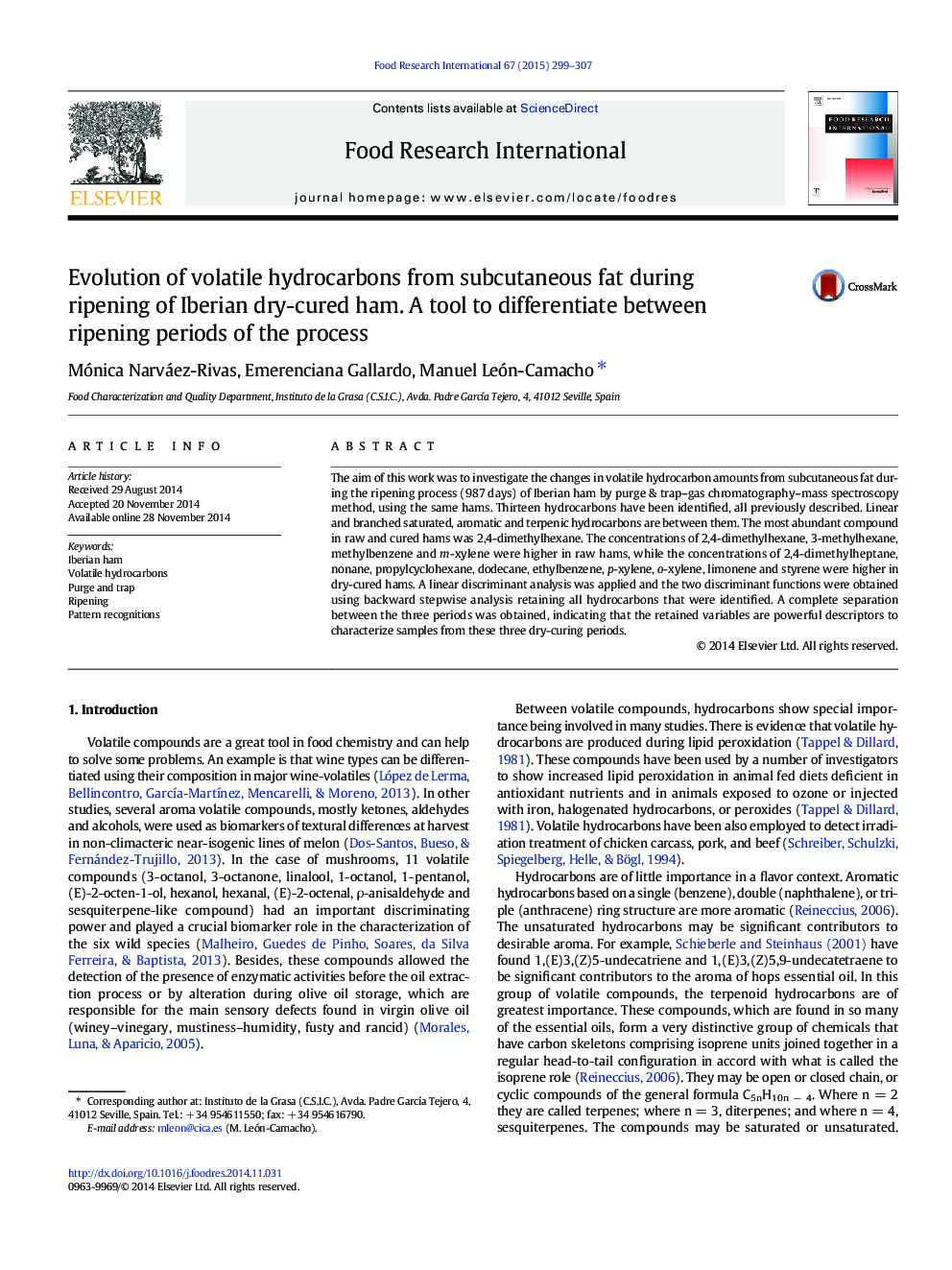| کد مقاله | کد نشریه | سال انتشار | مقاله انگلیسی | نسخه تمام متن |
|---|---|---|---|---|
| 6396084 | 1628479 | 2015 | 9 صفحه PDF | دانلود رایگان |
- Volatile hydrocarbons from Iberian ham subcutaneous fat were studied during ripening.
- The ripening process decreased the total amount of volatile hydrocarbons.
- High temperatures were involved in generation and/or lost of this compounds.
- To discriminate between ripening periods, pattern recognition techniques were used.
- A complete separation between ripening periods was obtained using all hydrocarbons.
The aim of this work was to investigate the changes in volatile hydrocarbon amounts from subcutaneous fat during the ripening process (987Â days) of Iberian ham by purge & trap-gas chromatography-mass spectroscopy method, using the same hams. Thirteen hydrocarbons have been identified, all previously described. Linear and branched saturated, aromatic and terpenic hydrocarbons are between them. The most abundant compound in raw and cured hams was 2,4-dimethylhexane. The concentrations of 2,4-dimethylhexane, 3-methylhexane, methylbenzene and m-xylene were higher in raw hams, while the concentrations of 2,4-dimethylheptane, nonane, propylcyclohexane, dodecane, ethylbenzene, p-xylene, o-xylene, limonene and styrene were higher in dry-cured hams. A linear discriminant analysis was applied and the two discriminant functions were obtained using backward stepwise analysis retaining all hydrocarbons that were identified. A complete separation between the three periods was obtained, indicating that the retained variables are powerful descriptors to characterize samples from these three dry-curing periods.
Journal: Food Research International - Volume 67, January 2015, Pages 299-307
